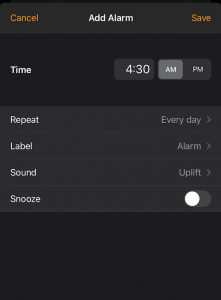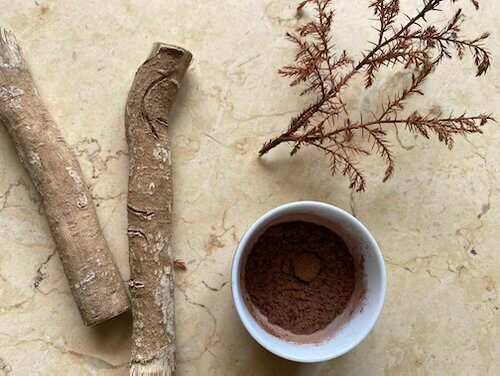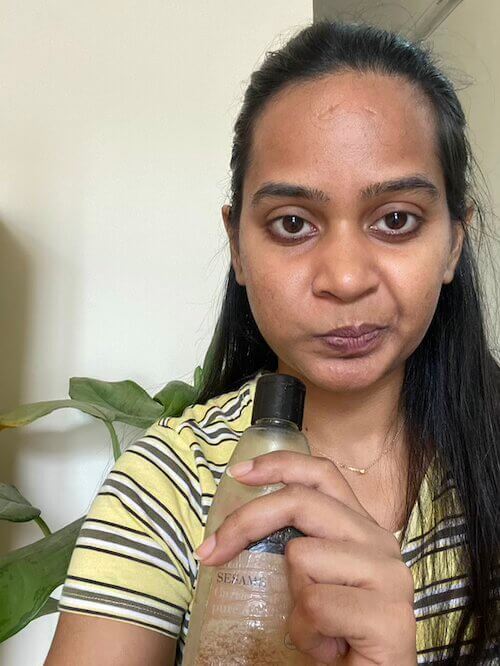The world we know has become chaotic and we are constantly trying to find the perfect diet, exercise, or even work. We are constantly running, comparing ourselves with others, and are constantly stressed. The number of lifestyle diseases is going up every year. Amidst all this, an Ayurvedic Dinacharya or daily routine can be our savior.
Ayurveda is made from two words, Ayur– Life and Veda– Science. It literally translates into the science of life. Yoga and Ayurveda are sister sciences that allow people to live a healthy, disease-free life by understanding and listening to your own body.
Although modern science has found solutions to a lot of diseases, our prime concern today is lifestyle disorders. It is a name given to a set of diseases like Diabetes, Obesity, Heart issues, or Anxiety which are primarily caused by a faulty lifestyle.
In Ayurveda, most problems in your body can be corrected with Ayurvedic lifestyle, Dinacharya, and food changes.
Most Yogis and Ayurvedic practitioners follow this Ayurvedic Dinacahrya. You can find Yogis who have lived their lives without even getting affected by the flu. There are countless examples of Yogis like Tao Porchon-Lynch who lived a healthy, disease-free life and performed Yoga asanas even in their 90’s.
What is a Dinacharya– The Ayurvedic routine?
Ayurveda is a 5000-year-old science of life. Ayurveda follows a system of understanding your bodies and mind to identify a lifestyle that works for you.
It is a holistic healing science that emphasizes the significance of a healthy lifestyle in preventing diseases. The objectives of Ayurveda are maintenance of health( Swasthya Rakshanam) and the avoidance of diseases.
Ayurvedic lifestyle is a combination of Daily Ritual (Dinacharya), Seasonal regimen (Ritucharya), and your code of conduct (Sadvritta).
These concepts are aimed at aligning our body to the natural rhythms thereby maintaining homeostasis (the ability to maintain a relatively stable internal state that persists despite changes in the world outside).
Ayurvedic Dinacharya means Dina– Daily+ Charya– Routine. A dinacharya is a daily routine followed by people which includes everything you do from waking up to going to bed.
An Ayurvedic daily routine is a combination of hygiene, food, work, and self-reflection. It follows the basic principles of doshas and gunas.
This systematic daily routine gives us a guideline to follow for a healthy, happy, and fulfilled life.
You can modify this dinacharya to suit you better according to your doshas. Learn more about doshas and what suits a particular dosha here. This is the most detailed guide on dosha and will help you identify and modify your lifestyle and diet according to your dosha.
Dinacharya– The daily regimen according to Ayurveda
Morning routine
1. Wake up before Brahma Muhurta
Brahma Muhurta in Ayurveda is the time of the day when universal consciousness is at the peak. It is a time gap in the morning before the plants start the process of photosynthesis again.
The nascent oxygen available is at its highest. This free oxygen easily combines with Hemoglobin and forms an oxyhemoglobin component which can reach the tissues and cells with oxygen deficiency.
It is extremely beneficial in boosting the immune system because of the availability of fresh oxygen.
Brahma muhurta is usually 1-1.5 hours before sunrise. It varies from region to region. If the time of sunrise in your country is 6 a.m. then your Brahma Muhurata will be somewhere around 4:30 in the morning.

So you can calculate the ideal time in your country based on sunrise during the particular season. Because this is the time of highest consciousness, it is also a very good time to read, study, or learn something.
In Ayurveda, students are especially encouraged to wake up early in this period and give some time to their studies. Anything learned in this period is easily stored in your long term memory.
Also, Vata energy is strong from 2 am to 6 am in the morning and is an ideal time to wake up and move. It is the time when your brain starts working and your body has the most energy to get out of the bed.
After 6 am, Kapha energy kicks in. This is when you find yourself snoozing your alarm for 5 minutes of extra sleep. This is a very difficult time to wake up.
Based on your doshas, you can choose to pick up the best time to wake up.
- Vata should wake up around sunrise at 6:30 am.
- Pitta should wake up before sunrise.
- Kapha people should wake up before sunrise at 4:30 to 5:30 am.
2. Oral health- brushing, tongue scraping & oil pulling
After waking up the next most important ritual in Ayurveda is taking care of your oral health. It is a three-step process,
1. Brushing your teeth
In Ayurvedic dinacharya, teeth are brushed using a combination of different herbs. The taste of these herbs varies from sweet to better and contains all the six tastes in Ayurveda.
Brushing your teeth with herbs provides a scrubbing action that removes plaque and residue from your teeth. The anti-microbial and anti-fungal agents produced by the essential oils in the herbs help in keeping the germs at bay.

It is recommended to brush using your finger index finger. Massaging your gums with herbal powder using your index finger increases circulation and decreases the chances of gum problems like pyorrhea.
You can always use a toothbrush if you are not comfortable using your finger. Make sure to brush in a circular motion if you want to avoid abrasion to your gums.
You can also make the herbal tooth powder at home but I prefer to get it online. My favorite tooth powder for brushing is
2. Oil pulling
The second important thing you can do for your oral health is oil pulling. In Ayurveda, most people perform oil pulling as a ritual once a week. You can either do a daily oil pulling or you can do it once a week. I prefer to do it once a week only.
Oil pulling is an extremely beneficial and moisturizing activity that you can do for maintaining your oral health. Oil pulling is done by putting 1 tablespoon of oil in your mouth and squishing it around for some time.
This squishing action will help the oil to loosen germs, residues, and plaque from the teeth. Oil pulling also helps in maintaining a clean tongue and a good breath.

Don’t swallow the oil after squishing. This used oil has a lot of germs which can disturb the digestive system. Also, because it is thick, it can clog your basin pipes. It is recommended to throw it out in the toilet or your bin after use.
Make sure you use an edible oil for oil pulling, not a commercial grade oil. My favorite oil is coconut oil in the summers and sesame oil in the winters. You can find edible versions of these oils on Amazon easily.
Here are my favorite coconut oil and sesame oil for oil pulling.
3. Tongue scraping
Tongue scraping is the most important thing you can do for your oral health in Ayurveda. Nowhere in modern medicine, it is required to scrape your tongue. All the germs and bacteria that produce bad breath are present on your tongue.
Your taste buds are present on your tongue. The toxins accumulated throughout the night are also present on the tongue.
By scraping your tongue you start your day fresh by removing all the accumulated toxins and germs from your tongue.
It helps you to get rid of bad breath and enhances your taste.
Scraping can be done using a toothbrush if it has a tongue cleaner at the back. If not, you can always use a separate tongue cleaner or a scraper made from stainless steel or copper. A tongue scraper costs somewhere around $5- 10 and can be bought easily on Amazon.
A copper tongue scraper has a long life and its natural anti-bacterial properties remove germs better.
My favorite one from Amazon is this,
3. Drink water
Water after waking up is the first thing that enters your stomach in the morning. Ayurveda recommends drinking warm water for all doshas. Warm water increases your metabolism in the morning and keeps it active throughout the day.
It also helps in the elimination and flushing of excess toxins from the body.
Drinking warm water with honey and lemon to increases your intake of Vitamin C in the morning and improves your immunity.
If you are a Pitta type you can add aloe vera juice to your early morning warm water to soothe your system.
4. Elimination
Once you start drinking warm water in the morning it becomes easier for your body to eliminate your bowels daily. Ayurvedic dinacharya is especially beneficial for people who suffer from irregular bowel movements and constipation.
If followed every day, Ayurvedic dinacharya allows your body to eliminate waste at a proper time in the morning.
If you don’t have a regular bowel movement then I would suggest you drink some water while sitting in an Asian squat for a couple of minutes. If you can’t do it, take the help of a wall to find your balance.
You will have an urge to eliminate immediately.
It is also recommended in Ayurveda to sit in a squatting position while you poo. The position of your excretory system is not appropriate for elimination in the western toilets.
You can always use an accessory like a squatty potty to help you align your body better. Even modern medicine has accepted a squatting position to be more beneficial while eliminating.
If you don’t want to invest in the squatty potty you can simply turn a small tub upside down and put your feet on it to provide some elevation.
Sun salutations and Yoga
Now that you are clean and your body is free from waste, you can move on to the next daily routine ritual of forming Yoga asanas.
While it is recommended to do Yoga after bathing, some people prefer doing yoga and then bathing because of sweat.
It totally depends on your choice and the climate you are in. If you live in a very hot country or a tropical climate then you can always take a bath after doing yoga.
But if you live in a cold country then you can bathe first and then go for yoga practice. This helps in retaining the heat generated during practice and keeps your body warm throughout the day. It also keeps the natural glow or Ojas on your face.
Sun salutations or Surya Namaskar means greeting the sun. Perform 5-10 sets of Sun salutations in the morning. If you can do it in some early morning sunlight, it is even more beneficial.
Early morning sunlight is best for absorbing Vitamin D without having to spend more time bathing in the sun.

Sun salutations can be followed by Yoga asanas or any other workout of your choice. Ayurveda prescribes doing an exercise that works on strength, mobility, and increasing your heartbeat. Yoga fulfills all three requirements.
Pranayama & Meditation
After the yoga practice, one should spend at least 10-15 minutes in a daily pranayama and meditation practice. After yoga practice, energy flows without any hindrance in the body, and it helps you achieve a calm state fairly quickly.
Use this energy to perform pranayamas like Kapalabhati (Skull-shining breath), Anulom-Vilom (Alternate nostril breathing), Bhastrika (Bellows Breath). These pranayamas prepare your mind for meditation.
Sit in silence for another 10 mins in meditation after your pranayama practice. This will activate your parasympathetic nervous system and bring down your anxiety levels.
You can follow any meditation of your choice. Some people like Zen meditation, others prefer chanting. Check out these resources to learn more about different meditation types.
Meditation guide for beginners
Daily Abhyanga/massage
A daily Abhyanga practice is recommended in Ayurvedic dinacharya for all dosha types. A daily abhyanga practice should be done on an empty stomach before bathing.
It is also known as Snehana in Ayurveda which translates to love. Massaging your oil with warm oil every morning is a very loving and soothing ritual. A daily abhyanga has a lot of benefits in Ayurveda,
- Increases blood circulation
- Removes toxins
- Moisturises skin
- Opens up sweat glands for toxin movement
- Opens up nerve channels
- Allows oxygen circulation in the body
- Activates and energizes the body
- Gets rid of dry scaly skin
Learn how to do a daily Abhyanga or Ayurvedic self-massage here.
Ayurveda recommends using oils according to your dosha to maximize the benefits. Coconut oil is highly recommended for Pitta and Kapha dosha during summers. People with Vata dosha can enjoy warm oils like olive and sesame throughout the year.
Bathing
Bathing or Snana is one of the Yamas in Ayurveda and has been laid special emphasis on. Bathing is the ritual of physical and mental hygiene in Ayurveda. A daily bath allows your body to get rid of the excess heat trapped throughout the night.
It rejuvenates your mind and improves brain clarity in the morning. It prepares your body for a new day.
Bathing should be done with scrubbing action on your body, to remove excess oil and dead skin from the body.
Use natural loofahs to scrub your body daily. I like these on amazon,
You can also use herbal bath powders to scrub and heal your body at the same time. These herbal bath powders are all-natural and have immense benefits for the skin. Ingredients used in these powders have anti-fungal, anti-bacterial properties and keeps your skin clear from eruptions and pimples. I have a recipe for a natural herbal powder here.
Alternatively, you can buy it online. I couldn’t find a lot of options online. But I found this,
After bathing, you can reapply oil or an Ayurvedic lotion to seal in the moisture. On your face, you can use a natural toner and oil to seal in the moisture.
If you wash your hair every day, apply 2-3 drops of coconut oil to keep your hair healthy and shiny. It also prevents premature hair greying.
Breakfast
Having breakfast is a personal choice. After following this dinacharya, most people will be hungry. If you feel hungry, have a simple meal with some fat to keep you full for a longer time.
Because it is the first meal, it should support and nourish your digestive system. Eating spicy, hard to digest food in the morning will put a lot of pressure on your digestive fire.
Don’t start your day with pitta aggravating drinks like tea or coffee.
Ayurveda recommends eating fruits in the morning. It is the best time for the body to absorb nutrients from the fruits.

Afternoon routine
1. Lunch
Luch should be consumed during the Pitta hours between 10 am to 2 pm. 1 pm is the ideal time to have lunch. It gives you immense time for your body to digest your breakfast by then.
This should be the biggest meal of the day. Include some raw vegetables or salad for lunch.
2. Work
2 pm to 6 pm is your Vata time again, which means it is time to think and look for ideas. This is a creative time so keep this time scheduled for creative tasks. Use this energy to come up with new ideas or creating something unique.
This means 2 pm to 6 pm is a great time to make a client presentation for example or click pictures for Social media.
Evening routine
From 6 pm to 10 pm is Kapha time. This is the time to relax and unwind.
1. Walk
Take a small walk in the evening to wind off work from your brain. It is a good time to reflect upon your day and process what needs to be done the next day.
A small walk in nature cures all the stress that is bothering you about work or family. If you have a family, use this time to play with your children or walk with your spouse.
2. Indulge in a hobby
If you have a hobby, this is the best time to indulge in it. It will allow your brain to come out of the work mode and engage in soothing meditative hobbies like gardening or a sport.

3. Dinner
Have a light, sattvic dinner before 8 pm in the evening. It gives ample time for the body to digest the food. Khichari is a very nourishing dinner option if you want to eat light. Add a teaspoon of ghee to your khichari for extra nourishment.
4. Wind-down
Because it is Kapha time, it will be easy for your body to wind down. Watch TV, read a book, spend some time with your family during this time.
If you still have to work in the evening, make sure you choose easy, passive tasks for the evening.
5. Sleep
When you start following this daily regimen, your circadian rhythm or internal clock will sync with your environment.
You will fall to sleep immediately without many efforts. However, if you still have difficulty sleeping, Ayurveda recommends,
1. Golden milk
Recipe
- In one cup of milk, add ½ teaspoon of turmeric powder and Ashwagandha powder.
- Boil this milk for 10 minutes and drink it warm.
Golden milk increases immunity and soothes your nerves. Ashwagandha has a number of benefits like increasing immunity, calming your brain, decreasing stress, and depression, all of which are important for a good sleep.
2. Warm milk with honey
Recipe
- Add teaspoon honey to 1 cup warm milk and consume it warm.
- Milk with honey is an Ayurvedic sedative and works for people who suffer from insomnia.
If you don’t drink milk, then you can drink a soothing herbal tea. Any herbal tea made from ingredients like Brahmi, Ashvagandha, Turmeric will help your body relax.
I highly recommend Pukka herbal tea to relax at night. I love their tea and I am a huge fan.
Make sure you get to sleep before 10 pm. From 10 pm onwards pitta energy is dominant. While pitta is fire, this fire is slow at night and is meant to digest and assimilate the food you ate throughout the day.
Tampering with this routine might result in improper digestion, accumulation of toxins, and irregular bowel movements.
Some people who are awake late during this time have an urge to munch or indulge in snacking. They end up eating processed food full of sugar like ice cream, chips, bread. These extra calories are stored up as fats and are difficult to lose.
Sleeping on time helps you get rid of these extra calories and lose weight as well.
Dinacharya- the ultimate daily routine
Now that you know what an ideal dinacharya looks like, start doing it to improve your life. Following a dinacharya can improve your health drastically. It can prevent lifestyle diseases and even heal chronic issues.
Ayurvedic dinacharya can be modified according to your doshas. This is a basic Ayurvedic dinacharya that will suit people of all doshas.
Start with one or two habits initially. It is very difficult for people to follow all of this by looking at the number of steps. However, it just flows once it becomes a habit.
If you have to choose 2-3 habits to begin with, I would recommend tongue scraping, drinking warm water in the morning, and following an eating schedule.
Allow your body to align with the natural rhythm and you will soon realize that you don’t need an alarm clock to wake up. Your body clock will wake you up on time every day.
Your skin will start healing and you will see changes in your behavior. This morning routine keeps you connected with your true self and allows you to recognize the important things in life.
Have you ever tried Ayurvedic dinacharya? What was your experience?
Let me know in the comments below.
Chakshu is a US alliance certified yoga teacher, a biotechnologist and an Ayurveda evangelist. Her passion is to help people live a toxic-free life, emotionally and chemically. She loves reading self-help books. When she is not writing, she is busy thinking about life.



Very nice information